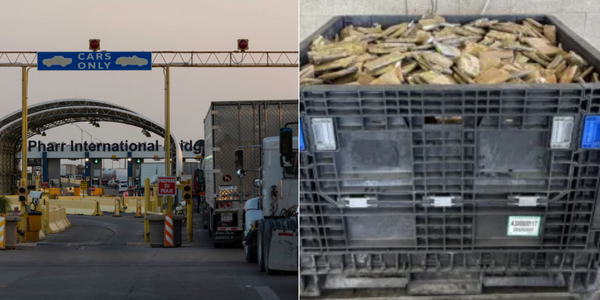
Russian forces stepped up their assault on the Ukrainian city of Lysychansk on Saturday, as they claimed to have “completely” encircled the last stronghold in the Luhansk region.
If Lysychansk falls, the entire region of Luhansk – which along with Donetsk makes up the eastern Donbas region – could come under Russian control, marking another strategic breakthrough for Vladimir Putin.
Andrei Marotchko, a spokesperson for the Russian-backed forces who are fighting with the Russian military, told the Russian state-owned news agency Tass: “Today the Luhansk popular militia and Russian forces occupied the last strategic heights, which allows us to confirm that Lysychansk is completely encircled.’’
The Guardian could not independently verify the claims. On Saturday Ruslan Muzychuk, spokesperson for Ukraine’s national guard, told Ukrainian TV that, although of all the fronts, “the situation in Lysychansk has been the most difficult, the city itself is not encircled and is controlled by Ukrainian forces”.
After having reduced its twin city, Sievierodonetsk, to rubble last week, Lysychansk became the new focus of the fighting in eastern Ukraine. It has been under constant Russian artillery bombardments and airstrikes for weeks.
“Private houses in attacked villages are burning down one by one,’’ Serhiy Haidai, the governor of the Luhansk region, wrote on the Telegram messaging app on Saturday. “With such a high density of shelling, we only have time to shelter the injured. Fires simultaneously in several places. We barely have time to eliminate large-scale fires in Lysychansk.’’
According to witnesses, the occupiers are destroying one house after another with heavy artillery, with residents hiding in basements almost round the clock.
The Russian defence ministry said its forces took control of an oil refinery on Lysychansk’s edge in recent days, but Haidai reported on Friday that fighting for the facility continued.
In a separate development, a number of powerful explosions rocked the city of Mykolaiv in southern Ukraine early on Saturday.
“There are powerful explosions in the city! Stay in shelters!” the Mykolaiv mayor, Oleksandr Senkevych, wrote on Telegram.
Before the blasts, air raid sirens sounded in the entire Mykolaiv region, where on Friday, according to Vitaliy Kim, the head of the Mykolaiv regional military administration, another 12 Russian missiles were fired, with most of them intercepted by Ukrainian forces.
The cause of the blasts was not immediately clear, although Russia said on Saturday it had hit army command posts in the area. “Russian forces destroyed five Ukrainian army command posts in the Donbas and in the Mykolaiv region with high-precision weapons,” the Russian defence ministry said on Saturday.
At the beginning of the invasion, Russian troops had practically encircled Mykolaiv and its port on the Bug River. Moscow troops had seized its airport and were advancing from the north-east.
However, after weeks of fighting, the Ukrainian army managed to push the Russians back.
Since then, and for the past months, Mykolaiv, which alongside its charismatic governor, became a symbol of the country’s resistance, the fighting has turned into a “war of rockets and artillery”.
According to Ukrainian authorities, Mykolaiv, which borders the vital port of Odesa, is regarded by Moscow as a strategic target in order to reach its goal to annex Ukraine’s Black Sea coast, making Ukraine a “non-sea country”.
On Friday, at least 21 people including two children died after two Russian missiles struck a multistorey block of flats and a recreation centre in buildings in the town of Serhiyivka, near Odesa.
Video showed the charred ruins of buildings. The Ukrainian president’s office said three X-22 missiles fired by Russian warplanes struck a block of flats and a campsite shortly before 1am local time.
Ukraine’s security service said a further 38 people, including six children and a pregnant woman, were taken to hospital with injuries. Most of those killed and injured were asleep when the missiles struck.
The attack came at the end of a week in which Moscow has escalated its long-range attacks, hitting civilian targets far from the frontline.
The Ukrainian prosecutor-general, Iryna Venediktova, said the investigators were recovering fragments from missiles and taking measurements to determine the trajectory of the weapons. “We are taking all the necessary investigative measures to determine the specific people guilty of this terrible war crime,” Venediktova said.
Ukrainian authorities interpreted the attack as payback for Russian troops being forced from the strategically important Snake Island a day earlier.
“The occupiers cannot win on the battlefield so they resort to vile killing of civilians,” Ivan Bakanov, the head of Ukraine’s security service, the SBU, said of Friday’s attack. “After the enemy was dislodged from Snake Island, he decided to respond with the cynical shelling of civilian targets.”
Russia portrayed the pullout from Snake Island as a “goodwill gesture”. Ukraine’s military said the Russians fled in two speedboats after a barrage of Ukrainian artillery and missile strikes.
Kyiv accused Russia on Saturday of dropping incendiary white phosphorus on Snake Island. White phosphorus, known as WP, is a chemical that burns fiercely in contact with air, producing thick white acrid smoke and a white light that can be useful for illumination. The high temperature at which it burns also makes it an effective incendiary device in war.
Ukrainian personnel were not on the island at the time of the attack and, according to military experts, the Russians used it to burn the weapons and ammunition they left on the island before their retreat.







